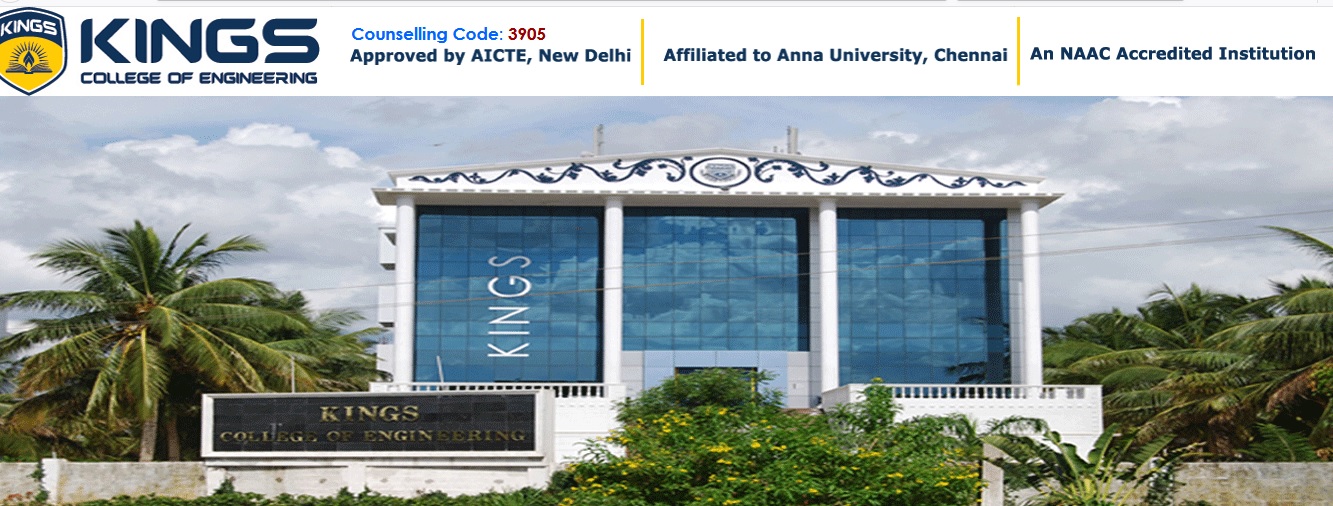CS1305 Visual Programming Question Bank : kings.ac.in
Name of the College : Kings College Of Engineering
Department : Information Technology
Subject : Visual Programming
Website : kings.ac.in
Document Type : Question Bank
Download Model/Sample Question Paper : https://www.pdfquestion.in/uploads/ki…ROGRAMMING.pdf
Kings Visual Programming Question Paper
Windows Programming
Part-A (2 Marks)
1. Define multitasking.
2. Name some of the header files used in windows programming.
3. Give an example for windows program.
Related : Kings College Of Engineering CS1014 User Interface Design Question Bank : www.pdfquestion.in/335.html
4. How do you create a window?
5. What is a Message loop?
6. Explain Get Message ( ) function.
7. Give the structure of MSG.
8. What is the purpose of window procedure?
9. When does a window procedure receive a WM-PAINT message?
10. What is the purpose of WM-DESTORY message?
11. Which is the most commonly used text output function in GDI?

12. What is the use of device context handle?
13. What should be done after painting is finished?
14. Classify the GDI function calls.
15. What are mapping modes and transforms?
16. What are metafiles?
17. What are the special features of scrollbars?
18. Explain the two-step process in system message queue.
19. What are the windows ‘resources’?
20. What is meant by Windows programming?
21. What is Hungarian Notation?
22. What is a handle?
23. What are the steps required to display a window?
24. What is the use of Translate Message?
25. What is the use of WM_PAINT Message?
26. What are queued and non-queued messages?
Part-B : (16 Marks)
1. What are the various functions used for basic drawing in a windows program? Explain in detail?
2. Write short notes on :
a. WinMain()
b. WndProc()
3. Explain the architecture of a windows program with a sample program.
4. Explain in detail the various child window controls.
5. What is GDI? Explain in detail the basic drawing functions used in windows programming?
6. Write a VC++ program to create a window. Explain all the functions and message loop.
7. Explain the two methods used for getting Device Context Handle with example.
Unit-II
Visual C++ Programming- Fundamentals
Part-A : (2 Marks)
1. Name any four App wizards.
2. What are the working files needed to complete a VC++ application?
3. Explain MFC.
4. What is the use of application framework?
5. Name the classes created by App wizard.
6. What are Dialog boxes?
7. What is multithreading?
8. What are the key design goals of MFC?
9. Give examples of mapping modes.
10. What are ActiveX controls?
11. What is meant by control notification?
12. What are Dialog Boxes?
13. What are modal dialog Boxes?
14. What is a thread?
15. When is worker thread created?
16. Define GDI.
17. What is resource view?
18. What are ActiveX event handlers?
19. What is a component gallery?
20. What is a class view?
21. What are the VC++ Components?
22. What is an Application wizard?
23. What is a Class wizard?
24. What is a Fixed scale mapping mode?
25. What is a Variable scale mapping mode?
26. What is a Bitmap?
27. Explain the display context classes CClientDC and CWindowDC?
28. Define font.
Part-B :(16 Marks)
1. Explain the various mapping modes used in visual C++ programming.
2. What are the various common controls and dialogs available for programming in windows? Explain in detail.
3. Explain in detail how the two types of dialog boxes are created with an example.
4. Write short notes on :
a. Applicaton framework.
b. MFC library.
5. Write short notes on :
a. Visual C++ components.
b. Event handling.
6. Explain in detail bitmaps loading into your application with a sample program.
Unit-III :
Document & View Architecture
Part-A : (2 Marks)
1. What are the three types of menus?
2. Which function adds menu items to a cascading menu?
3. What is status Bar?
4. What are the three additional actions necessary to place a dockable toolbar?
5. What are the functions provided by C document derived class?
6. What is Frame window object?
7. What is a splitter window?
8. What are static splitter window?
9. List out the classes that provide functionality of rich edit control within the context of MFC document view architecture?
10. What are DLLs?
11. What are the advantages of DLLs?
12. What is the use of :: GetProcAddress()?
13. Write about the memory issues of DLL?
14. What is COM?
15. What is DCOM?
16. What is the use of :: Load Library?
17. What is the use of CRichEditView?
18. Which call provides the functionality of rich edit control?
19. Define an interface.
20. Define an Object Class?
21. What is a Menu?
22. Define Document View Architecture.
23. What is an Accelerator?
24. What is windows registry?
25. Define Serialization.
26. What is Diagnostic Dumping?
27. What is Implicit Linking?
28. What is Explicit Linking?
29. What is a custom control DLL?
CS1305 VISUAL PROGRAMMING
30. What are the types of DLLs?
PART-B :(16 MARKS)
1. Explain in detail about keyboard acceleration.
2. Write short notes on :
a. Creating DLLs
b. RichEdit Controls.
3. What are the various functions related to creating and updating menus available in visual C++? Explain in detail.
4. Explain in detail how DLLs are created and used in windows programming.
5. Explain document view architecture.
6. Write short notes on :
a. Splitter window and multiple views.
b. Toolbar.